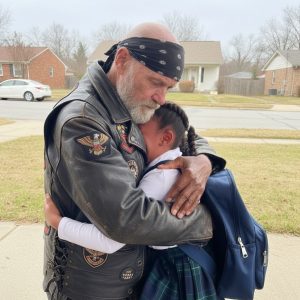Paragraph 1:
Mariana’s death has become more than a personal tragedy; it is a stark symbol of the fears and anxieties that many residents of her community carry silently. She was an ordinary young person, unarmed and unprepared for violence, simply walking down a familiar street when her life was cut short. Mariana’s daily routines—carrying a résumé, pursuing her ambitions—highlight the innocence and vulnerability of those caught in the crossfire of circumstances beyond their control. The stark contrast between her normalcy and the violence she encountered makes her loss resonate deeply within the neighborhood, transforming what should have been a hopeful journey into a story of grief and unfinished potential.
Paragraph 2:
The aftermath of Mariana’s death paints a portrait of absence and suspended life. Her family is left with tangible reminders of her ambitions: papers filled with dreams, a résumé brimming with promise, and a bedroom untouched since she last occupied it. These artifacts are not merely sentimental; they are stark representations of a future abruptly ended. The unfulfilled plans and preserved spaces evoke a sense of frozen time, where hope and potential remain painfully visible but unattainable. Through this lens, Mariana’s life becomes emblematic of the opportunities and safety that communities often wish they could guarantee but sometimes fail to protect.
Paragraph 3:
The public response to Mariana’s death is one of mounting emotion, blending grief with frustration and anger. As candles, flowers, and other memorials accumulate on the sidewalk where she fell, the symbolic act of remembrance is joined by a demand for accountability. Residents’ mourning is not passive; it is active, infused with a desire for meaningful change. The community’s grief transforms into a collective voice calling for improvements that go beyond temporary or superficial measures, signaling that condolences and reactive policing are insufficient. In Mariana’s story, mourning becomes inseparable from advocacy.
Paragraph 4:
Neighbors’ demands reflect a deeper frustration with systemic failures. They want not just patrol cars or brief gestures of sympathy, but tangible protection and evidence of accountability from authorities. The repeated exposure to danger has left the district tense and vigilant, and Mariana’s death crystallizes the precariousness of life in a community accustomed to fear. The neighborhood’s anxiety is grounded in lived experience; residents understand that moments of inattention or delayed responses from law enforcement can have irreversible consequences. Mariana’s story exposes these vulnerabilities, forcing the city to confront the consequences of inaction.
Paragraph 5:
Mariana’s death also functions as a cautionary tale. Her story has transcended personal tragedy to become a broader warning about the risks faced by ordinary people living amid violence. She is a reminder of the fragility of life in spaces affected by systemic insecurity, and her experience resonates with those who fear for themselves, their children, or their neighbors. By becoming a symbol, Mariana transforms grief into a vehicle for awareness, pressing the city to address the root causes of danger rather than merely respond to its symptoms. The accumulation of memorials, and the collective attention they generate, ensures that her death is not forgotten and that the community’s call for change gains visibility.
Paragraph 6:
Ultimately, Mariana represents both a wound and a plea. Her loss is deeply personal, but it is inseparable from the broader social context of fear, vulnerability, and unmet safety needs. Residents’ reactions—ranging from mourning to activism—reflect a community’s insistence that innocent lives deserve protection and that systemic failures must be addressed. Mariana’s story, frozen in memory and memorialized in the physical space she once occupied, underscores the urgent need for real solutions to violence and accountability. It is a narrative of both sorrow and insistence: grief intertwined with the demand that the city learn from tragedy and work to prevent the loss of another innocent life.




